And that is okay!
Adapted fromYour Upper Body, Your Yoga
By Bernie Clark
May 24, 2024
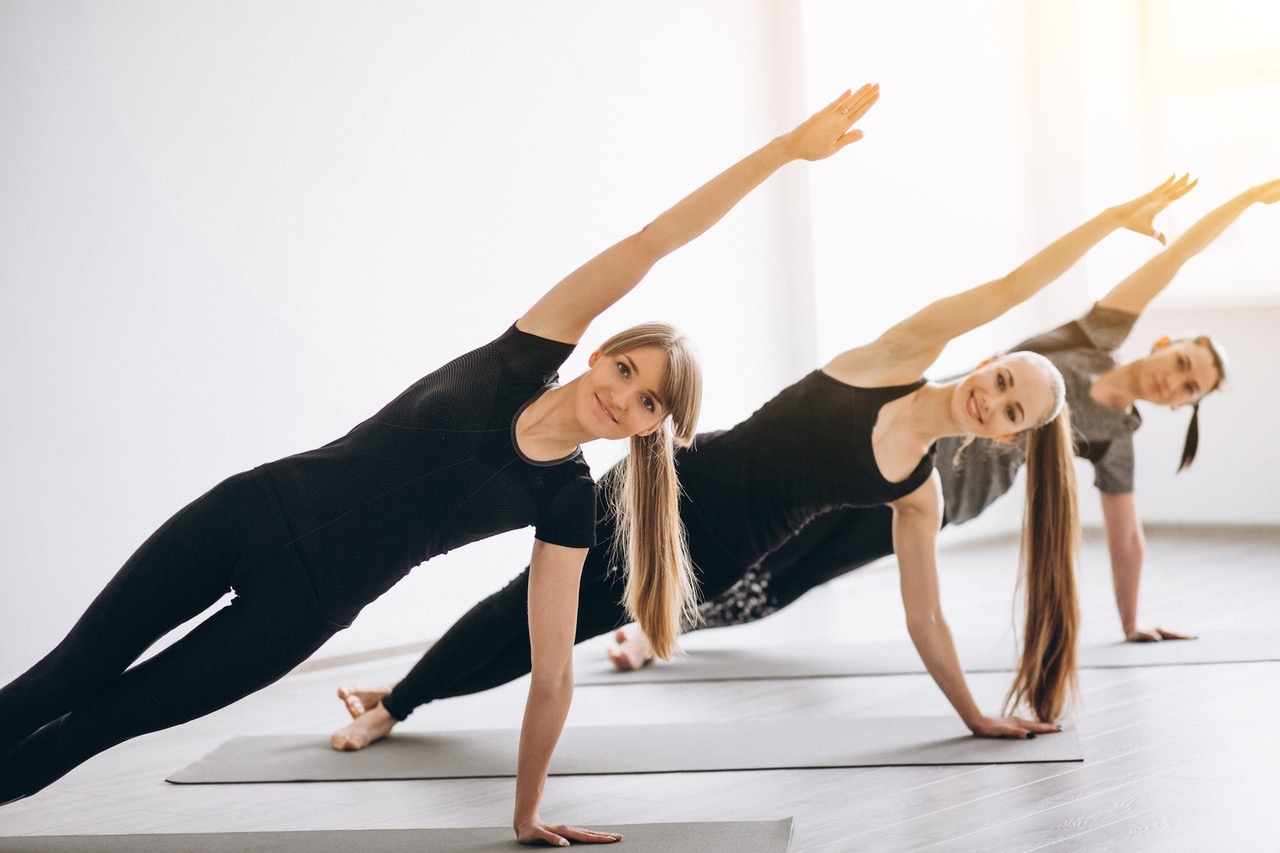
The next time you are in a yoga studio taking a class notice the elbows. Observe how many people’s elbows go past a straight line and how many never fully straighten their arms. The world is full of hyperextenders and hypoextenders, and neither group cares at all. They blissfully live their lives, often unaware of their unique anatomical elbow joints, until the day a yoga teacher sees their arms in a pose and freaks out. For the hyperextenders, they are sternly advised to micro-bend their elbows to avoid future injury. For the hypoextenders, they are encouraged to try to straighten the arm, and when they fail to do so, the teacher moves on with a confused look on her face. Whether someone is at risk of damage to their elbow joint depends upon what is allowing or preventing greater range of motion.
EXTENSION RANGE OF MOTION
Straightening of the elbow is a much more frequent movement in yoga than bending it, due to the preponderance of pushing (extension) movements versus pulling (flexion) movements. We extend the elbow and straighten the arm most of the time we have the hands on the floor, such as in Down Dog (Adhomukhasvanasana) or in non-weight-bearing postures like Triangle Pose (Trikonasana) and Warrior (Virabhadrasana). But not everyone can fully extend and thus straighten the arm (this is called hypoextension), while many people can go beyond straight (called hyperextension).
For some reason, many reports on the range of extension available often cite the limit to be 0°, which represent a perfectly straight arm. A few studies admit that a very small number of people can go into hyperextension, but it is presented as very unusual.1
However, one look around a yoga studio will show that there are a lot of people who hyperextend and many who do not extend enough to fully straighten their arms. Indeed, a study of over 670 people found that the average person was just short of full 180° extension in the elbow (by about 0.6°), but a lot of people hyperextended significantly.2 Of the people who did hyperextend, the average amount was 3.8°, but the total range included some who hyperextended 22°. Curiously, in a definition of hypermobility syndrome, an elbow is not considered hypermobile unless it can hyperextend beyond 10°.3 In the other direction, this same study found many people could not fully straighten their arm. These hypoextenders included people who were up to 18° short of full extension of the arm at the elbow.
Softer tissues can prevent extension of the elbow through tension. The joint capsules, the medial collateral and lateral collateral complexes, as well as the muscles and tendons that cross the joint can be short or tight which will limit extension. Curiously, if these tissues are removed during a cadaver dissection, an extra 8° of extension can occur. This gives some idea of their contribution to the joint’s stability.4 In clinical settings, it has been observed that an inability to reach full extension can also be due to contracture of the muscles, muscle weakness or pain. However, the most frequent limit to extension of the elbow is due to contact between the humerus (the upper arm bone) and the ulna (one of the two forearm bones. In this case the bone that leads towards the little finger side.)
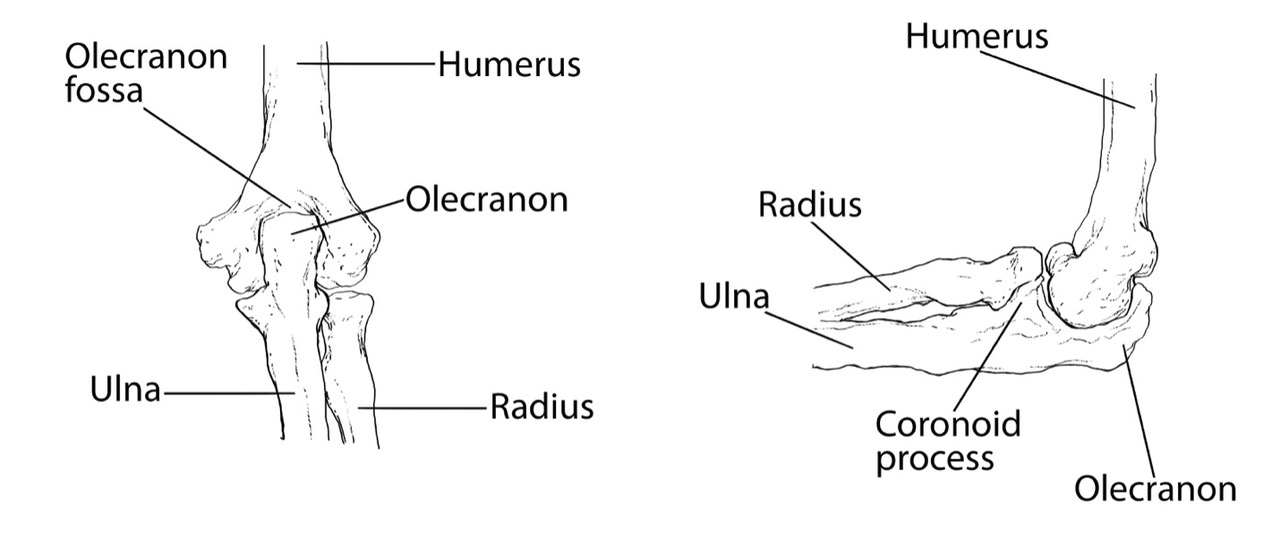
More specifically, the main limitation to extension is contact between the olecranon process of the ulna and the olecranon fossa of the humerus, as shown in figure 2. Once these two bones hit, extension is complete. When this contact occurs varies considerably from person to person, based on the unique size and shape of the olecranon and fossa or due to the presence of bony growths (osteophytes). Since this is a bony contact, the sensations will be of a hard stuckness in the joint. However, the size and depth of the olecranon and its fossa are just two of several possible reasons for the variation we find in elbow range of motion.
ULNAR BOWING and PUDA
One significant variation of the ulna is its anterior curve. The ulna is concave anteriorly, at least for most people. Since it is difficult to define the exact amount of curvature an ulna has, another measure has been created, termed the proximal ulna dorsal angle (PUDA). This is shown in figure 3. A study of 60 cadavers found this curvature of the ulna in 92% of cases.5 There seemed to be no correlation of the angle to age or gender, but the dominant arm had slightly larger angles. The PUDA range was 1.4° to 12°, with the average being about 5.6°. Other studies had similar values, but as shown in figure 3a, there are cases in the literature of a negative angle (recurvatum) as well as neutral and positive angles (procurvatum).6
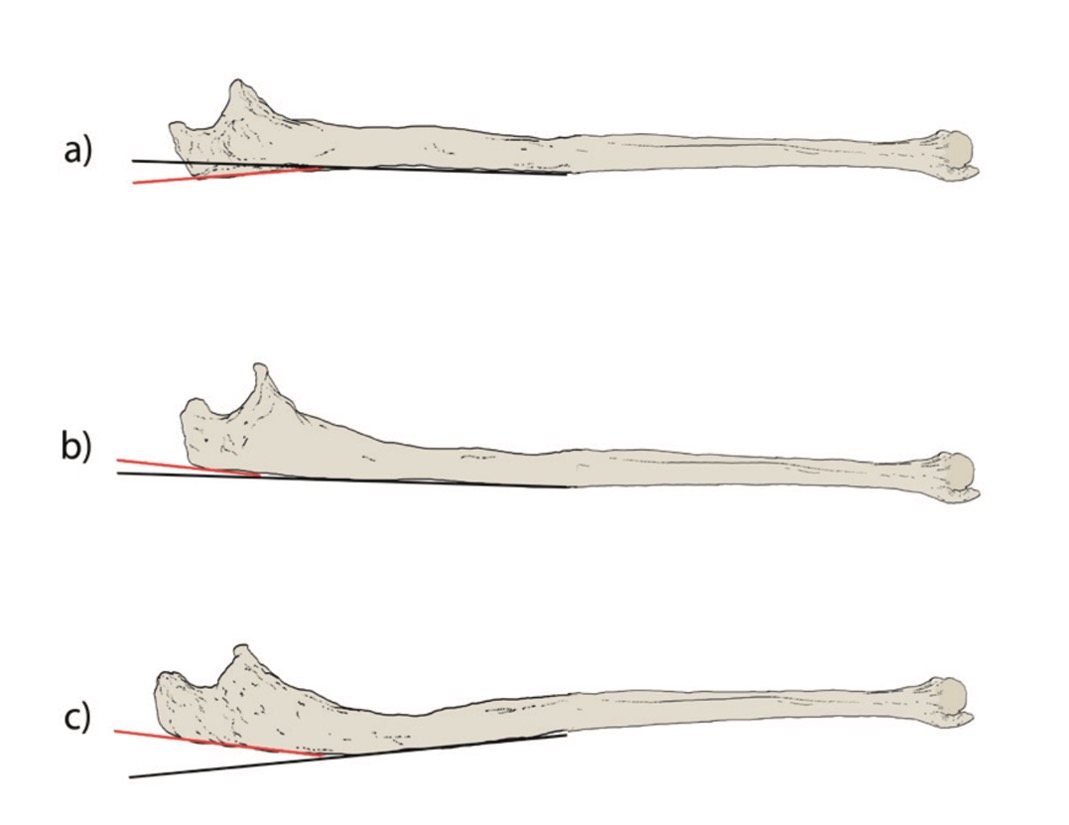
An illusion of hyperextension may arise due to a backwards curvature of the ulna (see figures 3a and 4a). In these cases, the ulna’s olecranon may sit within the humerus’ olecranon fossa at exactly 0° when the arm is fully extended, but the forearm’s curvature will create the appearance of hyperextension. Conversely, the appearance of hypoextension can be caused by a forward curvature of the ulna, or indeed in some cases by a forward curvature of the humerus, even though the olecranon is fully extended within the olecranon fossa.
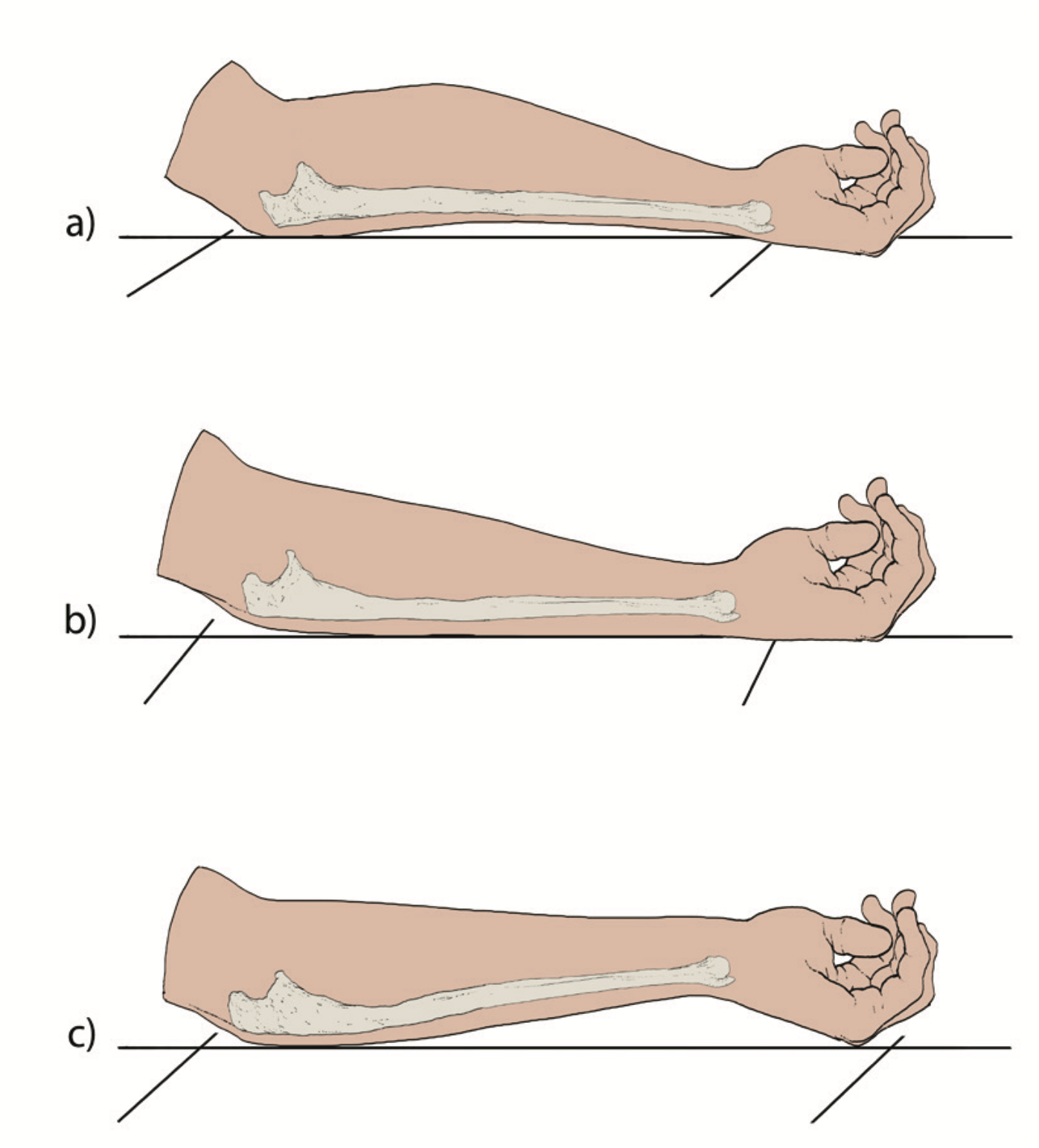
The PUDA will affect the range of extension available at the elbow, along with the other bony variations already discussed. To determine whether you have a positive, negative or neutral PUDA, you can either get an X-ray of your forearm or try this simple method (see figure 4). With your elbow flexed 90° and palm facing up (supination), place your forearm on a table or desk top. Keep the point of your elbow (the olecranon) and the bony edge of the length of your ulna on the table and try to bring the back of your wrist to the table as well. If you have no PUDA angle (b), your whole forearm will lie flat against the table, and there will be no space between the wrist and the table top. However, if you have a positive PUDA (c), the wrist may be “floating” above the table and the only way you can bring it down is to roll the elbow off the table. If, on the other hand, both your elbow and wrist are on the table but there is a gap between the table top and the middle of your forearm (a), you have a negative PUDA.
A positive PUDA, which means your ulna has an anterior curve, is correlated with a reduction in extension and in the overall range of motion of the elbow.7 A negative PUDA may allow a greater than normal amount of extension. Indeed, a negative PUDA may appear as a hyperextended elbow. In this case, the apparent hyperextension is not coming from the elbow joint directly but from the backwards curvature of the ulna. Your arm may look hyperextended, but it is not.
Look again at the three women in the photo at the top of this page. Notice that the woman in the back has a perfectly straight arm. She has “stacked her bones” and is quite happy supporting all her weight on the straight arm. However, the woman at the front is hyperextending her elbow. She is smiling but, should she be allowed to hyperextend their elbows? This is a controversial topic. In the yoga world, the most common response from yoga teachers will be an emphatic, “No!” Even in the broader fitness world, strong negative reactions arise. Chances are very good that this student will be approached by the teacher to fix her hyperextension and be told to microbend her elbow until the arm is straight.
Here is a personal speculation: the reason for this visceral viewpoint can be traced, to some degree, to the fact that most people cannot hyperextend like this student. If most people were to make their elbows bend that much, they would break their arms. Since teachers don’t want their students to injure themselves, they will offer to their students the same instruction they would apply to themselves: “Since I can’t do that, you shouldn’t either.” This objection is never spoken and rarely even realized. It is an unconscious reaction to seeing the student do something that feels intuitively dangerous. When the reaction does consciously surface, it is rationalized with a bit of faulty scientific or biomechanical reasoning. The teacher may claim, “It is better to build strength in the arm to prevent injury than to rely upon locking the joint. Locking the joint can damage it over time. Therefore, microbend the elbow to build stronger muscles.” In this context, a “micro-bend” is a small amount of flexion—just enough to straighten the elbow. This logic does not stand up to biomechanical investigation. It is pseudoscientific and not based on any rigorous study. It is simply the teacher’s opinion; there is no proof that locking the elbow will damage the joint over time.
Most of the load in a hyperextended elbow is borne between the trochlea of the humerus and the trochlear groove of the ulna. Bones are designed to withstand large forces. Indeed, bones develop and remain strong through consistent loading. Thus, to say “never hyperextend your elbows” risks the bones becoming weaker. Once the bones begin to atrophy, even greater care will be demanded to avoid hyperextension, which will further reduce the ability of the bones to grow stronger. It becomes a self-fulfilling negative spiral of greater weakness and lessened exercise for the bones.
STRENGTHENING THE BONES IN WEIGHTLIFTING

Although in the weightlifting world there are coaches who advise against locking the elbows, when you look at elite athletes—for example, as shown in figure 5—you will see something different. These athletes are taught to fully lock out the elbows even under tremendous loads. To quote just one trainer, “The elbows need to be completely extended, and aggressively.”8 To quote another, “In the normal, uninjured knee or elbow, full extension is the strongest weight-bearing position during axial loading… If volume [of exercise] is properly controlled, full extension should not be a problem.”9
If elite athletes had to rely solely upon their muscles to hold a tremendous amount of weight, they would have lower maximal performances. Fortunately, our bones can be trained to withstand the load, as long as the training is done wisely and over time. Through years of training, athletes can “callus their bones,”10 making them far stronger than they would ordinarily be. Like all joints, the elbows can be trained to be stronger and more tolerant to larger loads. This is the principle behind the acronym SAID, which stands for specific adaptation to imposed demand. Tissues that are used become more usable.
It is not a problem per se to suggest that a student who hyperextends their elbow microbend it. If the teacher’s intention is to develop muscle strength in the student’s arms, micro-bending the elbow could be a very valid cue. However, if that is the intention, why not offer the cue to the whole class? Why single out that one student? Surely all the students can benefit from building more arm strength. Certainly, some students have a condition or injury that would make it advisable to avoid hyperextending the elbows. However, even these students need to take their arm through its full range of motion; they just have to be careful how much load they allow. But over time, they will want to increase their tolerance levels and the load.
Let’s consider the student at the front of the group in the photo at the top of this article. Should she be told to never hyperextend her elbow? I don’t know. I would want to ask her what she is feeling. Does this position cause her pain while she is in the pose? Or when she comes out of the pose? Or over the next day or two? If not, I would leave her alone. If it does, I would suggest other postures for her where she can still hyperextend her elbows but with low or no load, such as hyperextending her arms while in Warrior Pose or when on her hands and knees. Every body is different and there is no recipe that will work for every body. The challenge is to find out what is best for your elbow. If you have healthy elbows with no conditions that make your fascia weaker, then find times to appropriate work through your full range of motion, including hyperextension, as long as you remain pain-free.
Oh, and what about that woman in the middle of the photo? What is going on with her elbow? It looks like she is hypoextended, but she isn’t. That will be the topic of the next article: the Carrying Angle…
To learn more about human variation and its implications for a functional approach to yoga, check out the upcoming in-person course offered by Bernie July 8 – 13, 2024 in Vancouver. Visit this page for details: Functional Anatomy – Advanced Studies.
____________________________
Footnotes
1 See, for one example, Houglum and Bertoti, Brunnstrom’s Clinical Kinesiology, 223, where it is implied that variation beyond 0° of extension is rare.
2 See the Centers for Disease Control, Public Use Dataset for Normal Joint Range of Motion: Data Description and Sample Data Tables (October 27, 2010), www.cdc.gov/ncbddd/jointrom/documents/Normal-ROM-Data-Description-and-Sample-Tables.pdf.
3 See the Ehlers-Danlos Society, Assessing Joint Hypermobility: The Beighton Scoring System (n.d.),
https://www.ehlers-danlos.com/assessing-joint-hypermobility/.
4 See R.T. Willing, M. Nishiwaki, J.A. Johnson, G.J. King, and G.S. Athwal, “Evaluation of a Computational Model to Predict Elbow Range of Motion.” Computer Aided Surgery 19.4–6 (2014): 57–63, doi:10.3109/10929088.2014.886083.
5 See P. Savakkanavar and C.P. Babu, “An Assessment of Proximal Ulna Dorsal Angulation Using Digital Radiographic Images,” International Journal of Orthopaedics Sciences 3 (2017): 26–29.
6 The variations cited here are from R. Shane Tubbs, Mohammadali M. Shoja, and Marios Loukas (eds.), Bergman’s Comprehensive Encyclopedia of Human Anatomic Variation (London: Wiley-Blackwell, 2016), page 146.
7 See D.M. Rouleau et al., “The Influence of Proximal Ulnar Morphology on Elbow Range of Motion,” Journal of Shoulder and Elbow Surgery 21.3 (2012): 384–8, doi:10.1016/j. jse.2011.10.008.
8 See Greg Everett, “Maximize the Stability & Security of Your Snatch Overhead,”
https://www.catalystathletics.com/article/119/ ics.com/article/2042/Maximize-The-Stability-Security-of-Your-Snatch-Overhead-Pos/; “Overhead Stability in the Snatch,” https://www.catalystathletics.com/article/119/ Overhead-Stability-in-the-Snatch/; and “Lock It in… NOW,” https://www.catalystathletics.com/article/2011/ Lock-It-In-NOW/.
9 See Lee E. Brown, “Lock Out Joints or Not?” Strength and Conditioning Journal 24.5 (2002): 13.
10 I first heard this expression uttered by Stuart McGill, a spine biomechanic who works with elite athletes. See his book Gift of Injury: The Strength Athlete’s Guide to Recovering from Back Injury and Winning Again (Waterloo, Canada: Backfit Pro, 2017).
